How to Get Policies and Procedures ‘Done’

Creating and maintaining a definitive set of policies and procedures represents a significant investment of resources. To make these activities as routine and painless as possible, organization are wise to establish a repeatable policy and procedure development process workflow. It is by following this process that you learn how to get policies and procedures ‘Done’.
How Can You Get Policies and Procedures ‘Done’
Policies and procedures are never “done” in the sense that they may be declared “complete” and set aside. These documents represent the “good practices?” used by an organization to do its work and evolve as the ways of doing business change.
But establishing a baseline set of policies and procedures to provide the foundation for ongoing development is a task that can be considered “complete” when they cover the core processes the organization uses to do business. Adopting a standard process for developing policies and procedures reduces the need for recurring discussions about how the process should take place.
An organization can adopt a process that works across organizational processes, activities and teams. Putting an approved standard process in writing before the major effort of developing policies and procedures begins allows authors, subject matter experts and managers to focus on the policy and procedure content of the documents.
Start with a Process Template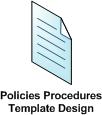
To get policies and procedures ‘done’, a standard plan to document processes and for developing policies and procedures provides the example for the work it authorizes and directs. The details for developing policies and procedures should apply to this standard process template first.
For example, if each organizational activity is to be governed by a policy and directed by multiple procedures, the policy and procedure development process also must include these same components.
The standard process document should include the set of topics and that must apply to all other policies and procedures for the organization.
These topics may typically include:
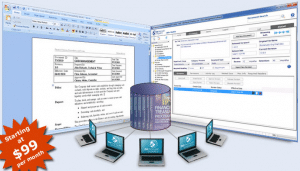
When you use our online document management system, procedures, records, and rights to use or edit them are managed within the web-based system. Deployment — and control — become very easy.
- Document Organization
- Document Format
- Subject Matter Experts
- Document Review
- Document Approval
- Document Publication
- Document Distribution
Document Organization
The required policy and procedures documents for each organizational activity or process are identified. This topic provides guidance regarding the preferred document types and hierarchy to be used.
For example, this guidance may direct that a policy and a set of supporting procedures are sufficient. On the other hand, authors may be asked to develop a policy, a process or activity description, procedures, and work instructions.
These decisions are guided by the complexity of the organization’s activities and the level of detail required to clearly describe how work is to be performed.
Document Format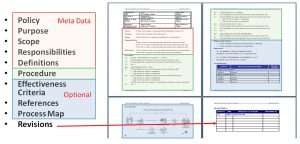
Establishing a standard document format for policy and procedure documents saves considerable development time. Document formats should be used which help readers easily understand the requirements of the policy or procedure and then saved in Microsoft Word Templates.
Professionally pre-designed document templates may provide the most efficient starting point for developing policies and procedures. Organizations should be aware that pre-designed document templates are generic and may need to be adapted to their specific needs.
Use Subject Matter Experts
Identifying appropriate subject matter experts who provide the detail for the content of policies and procedures helps authors develop complete and accurate documents. A policy statement for this topic may establish the level of cooperation requested of subject matter experts. This should be done early in establishing the policy procedure workflow.
Since policies often relate to the strategic objectives of the organization, subject matter experts for policy development should be representatives of appropriate levels of organization management. Often the most knowledgeable experts for the detailed content provided in procedures are the people who already perform those activities on a daily basis.
Document Review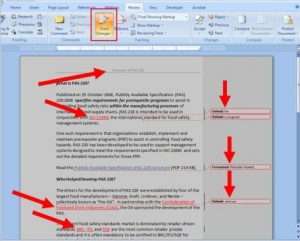
Who drafts, reviews, and approves your procedures? Policy and procedure documents should be reviewed by a senior subject matter expert who can provide the assurance that the documents convey the level of detail and accuracy necessary.
Policy and procedure documents reflect approved organizational practices, or compliance or conformance with regulatory or certification requirements. Making sure they are complete, accurate and timely is worth the quality control effort needed to get them right.
Document Approval
Policies and procedures, to be effective, must carry sufficient organizational authority to encourage employee compliance. While a sign-off from the CEO may not be necessary, each policy and procedure should be approved at a level of the organization appropriate to the subject matter addressed by the documents.
Document Publication
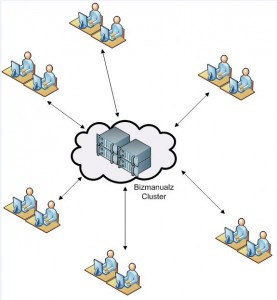
IT Policy Management
Criteria describing what actions constitute the act of publication of a policy or procedure should be established. The act of publication directly relates to when the document becomes effective and how it is made available to those to whom it applies.
Document Distribution
To have an impact on the organization, you should publish policies and procedures online to make them easily available to all members of the organization. The location of documents, information about who they affect, the ways personnel may gain access to them, and other details about document availability, retention and eventual disposition should be provided.
Get Policies and Procedures ‘Done’
Organizations that implement a standard process for developing policies and procedures, and follow that process consistently, are far more likely to succeed in getting policies and procedures ‘done’.
Author Bio: The guest author, Dave Baldwin, is a successful business analyst, project manager, technical writer, editor, information designer, and communication consultant. Dave can be reached at davebaldwinconsulting.com
















Leave a Reply